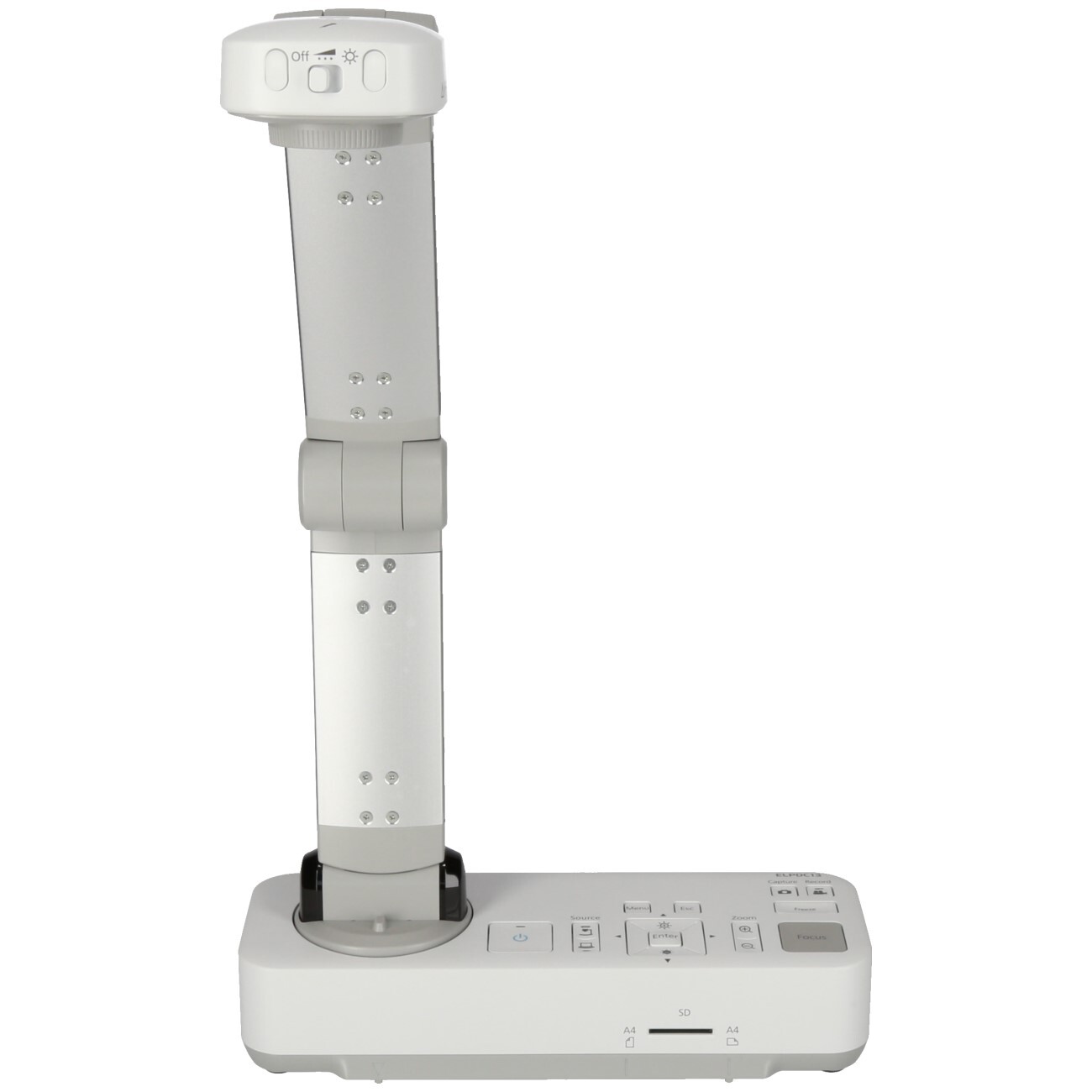















































£444.90*
- Resolution 1920 x 1080 Full HD
- Camera resolution 2 MP
- Focus type Manual & automatic focus


Product information
Bring lessons to life with this user-friendly documentcamera and share pictures and objects in Full HD on a large screen for thebenefit of the whole class. Bursting with a range of clever features andfunctionality, teachers can create a dynamic environment to enhance studentlearning. Benefitting from a lightweight and portable design, it is easy totransport between classrooms.
Display in Full HD- Display images and 3D objects in Full HDwith incredible detail for the whole class to see. Thanks to a large A3shooting area, two full pages from a textbook can be displayed. Smooth videostreaming is achieved with impressive clarity and without motion blur at 30frames per second. Thanks to a 16 x digital zoom and built-in LED light, evenintricate detail can be seen. Ideal for science lessons, minute objects can bedisplayed on a large screen thanks to a microscope attachment.
Added flexibility- Live images and video content, includingthat stored on a SD card, can be output to multiple displays thanks to parallelvideo output. Thanks to split-screen functionality, teachers can present twopieces of content side-by-side to help highlight teaching points, such as plantand animal growth. Teachers can maintain student engagement by operating thedocument camera directly from the projected image at the front of theclassroom, including starting and stopping video recordings.
Key Features
- Clear, smooth images: Full HD 1080p camera and30-frames-per-second screen refresh rate
- Capture every detail: 16 x digital zoom; one-touch autofocus and freeze function
- Large A3 capture area: Ideal for projecting maps, detaileddiagrams and 3D objects
- Illuminate hard-to-see objects: Built-in LED light
- Added peace of mind: Kensington lock and security bar fortheft protection
Technical data
| Name | Epson document camera ELPDC13 |
|---|---|
| Article number | 1161134 |
| GTIN/EAN | 8715946610115 |
| Manufacturer SKU | V12H757040 |
| Model name | ELPDC13 |
| Brand | Epson |
| Product Type | Visualizer |
| Resolution | 1920 x 1080 Full HD |
| Frames per Second | 30 fps |
| Focus type | Manual & automatic focus |
| Digital Zoom | 16 |
| Camera resolution | 2 MP |
| Inputs | 1x USB-B , 1x VGA |
| Outputs | 1x HDMI |
| Product width | 27 cm |
| Product height | 44.7 cm |
| Product depth | 21.7 cm |
| Weight | 2.5 kg |
| Colour | White |
| Condition | New |
| Warranty | 36 Month |
| Warranty type | Bringin service Service and support information |
Product safety
| Person responsible for the EU |
|---|
| Epson Deutschland GmbH |
| Schiessstraße 49 |
| 40549 Düsseldorf |
| Germany |
| kontakt_de@epson.de |



